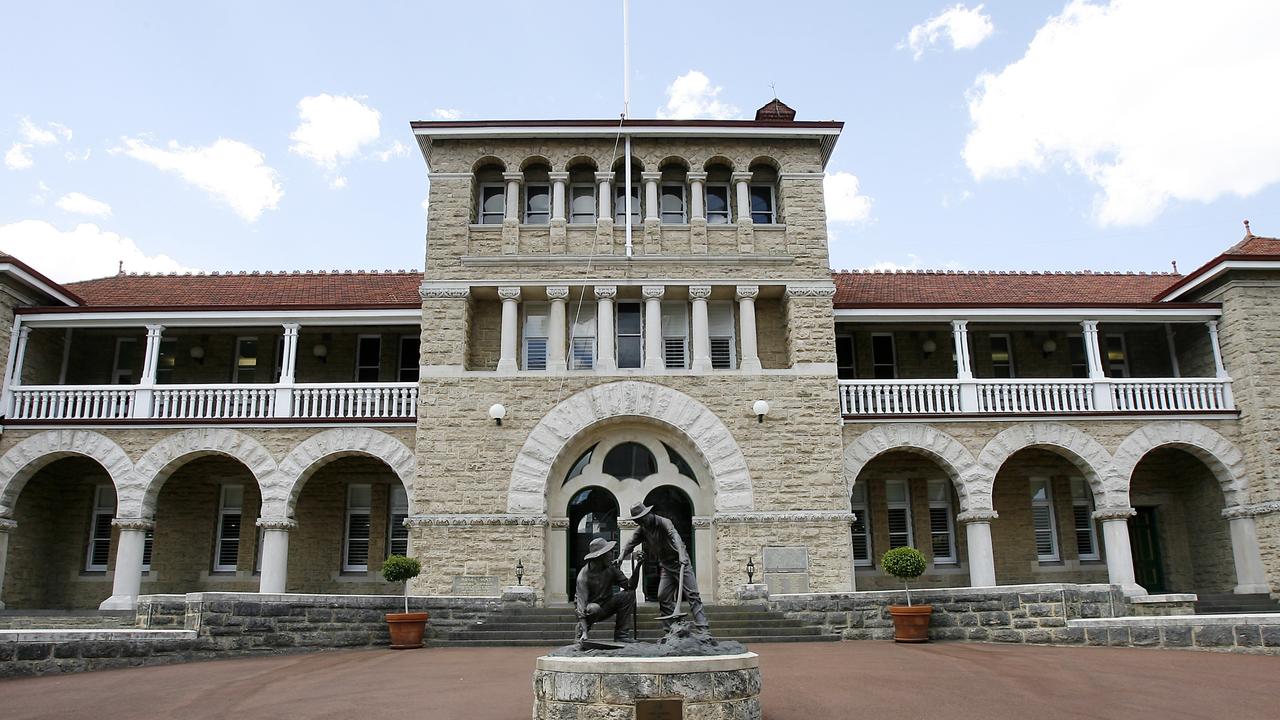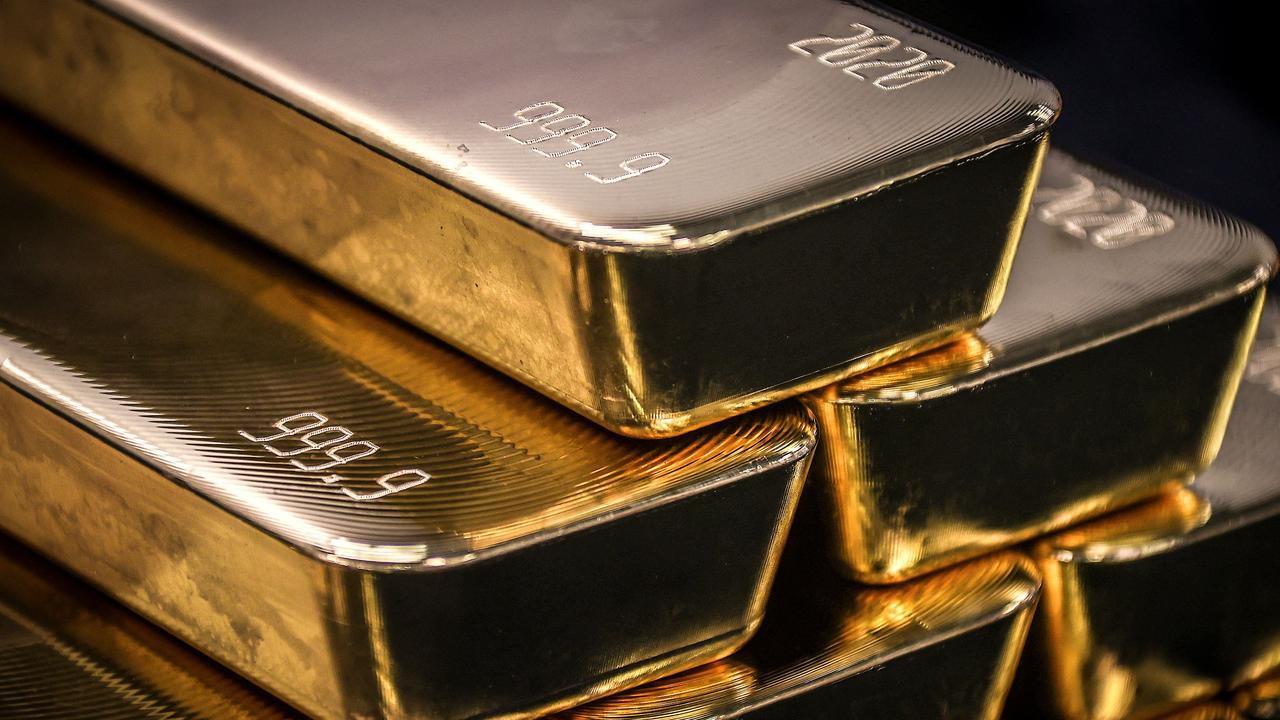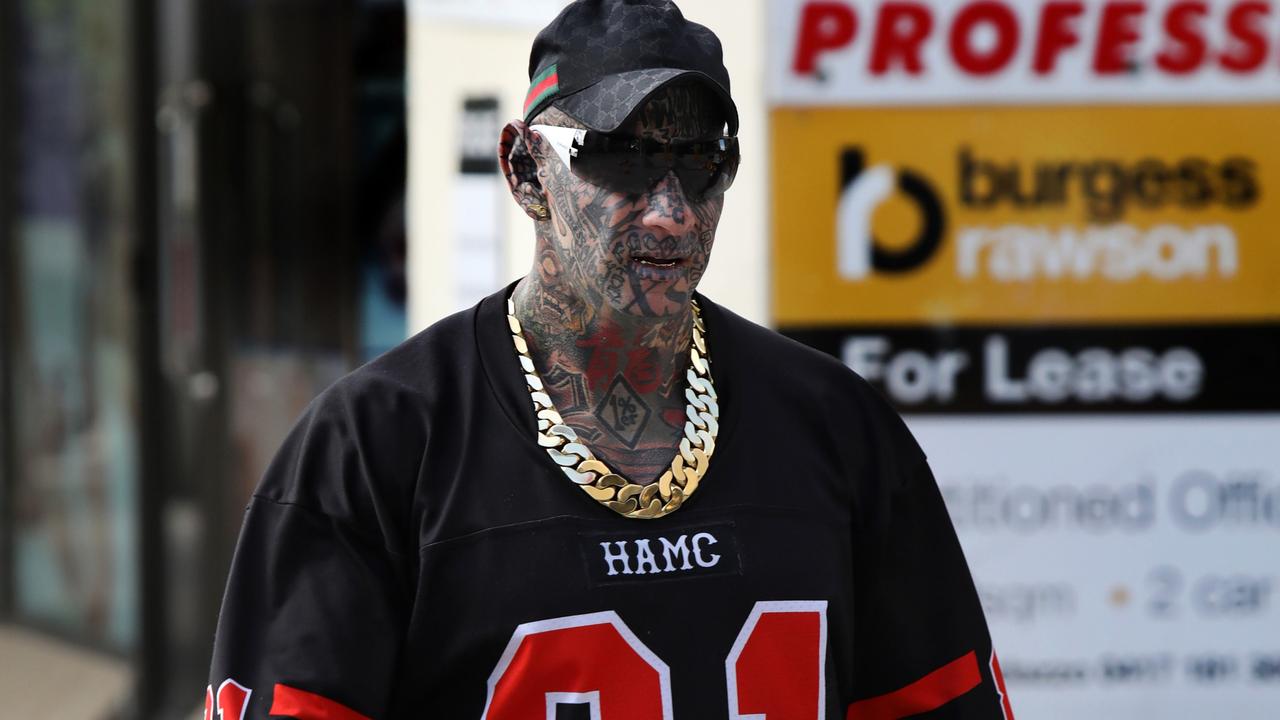Australia’s government-owned maker of gold bullion bars kept quiet damning evidence the gold it was selling was less than pure.
Australia’s only producer of gold bullion may have minted almost $9 billion of substandard bars, diluted with other metals, but kept the discovery quiet.
It’s also been revealed that the Perth Mint, which was founded in 1899 before Australia became a nation, sold $27,000 of gold to an ex-bikie but failed to investigate the “red flag” transaction. In addition, it has links to an international bank whose largest shareholder is a Russian oligarch with links to Vladimir Putin.
The ABC Four Corners investigation has raised serious questions about the governance of the Perth Mint.
It is owned by the Western Australian government through an organisation called the Gold Corporation which WA Premier Mark McGowan had ministerial responsibility for it until March 2021.

The main entrance to the Perth Mint.
‘Doping’ gold
The Perth Mint is the world’s biggest processor of new gold and is the only mint globally with a government guarantee.
It sold more than $20 billion of gold last year with people able to walk into its Perth CBD shop and walk out with bullion bars and coins.
It states online that its gold is 99.9 per cent pure. But that hasn’t always been the case, the ABC discovered.
In 2018, the Perth Mint began “doping” its new gold. This is when non-gold metals, like silver or copper, are added to the mix to lower the overall gold content. It was expected to save the organisation $620,000 annually.
Diluting gold does sometimes occur within the industry but is generally tolerated if the bars remain 99.9 per cent pure.

Teh Perth Mint has admitted to “doping” gold. But the process went too far. (Photo by DAVID GRAY / AFP)
$9 billion
However, a few months after the doping began there were internal concerns, the ABC found, about how rigorous the 99.9 per cent gold total was being adhered too.
In 2021, the Shanghai Gold Exchange (SGE), a key buyer of Perth produced gold, told the Mint a number of the bars it had received contained too much silver and not enough gold.
The accusation checked out, Perth Mint discovered, when it looked into its records regarding the batch sent to China. And it raised the possibility that all the gold bars sent to SGE had similar defects.
The Mint estimated that if it had to recall all 100 tons of gold it had shipped to Shanghai it could be on the nose for $8.7 billion.
The gold would have to be transported back to WA, melted down and recast without the impurities before it could be sold again.
It replaced one of the bars but left the Chinese firm to prove that the other bars were similarly tainted.

Molten gold poured into an ingot mould at the Perth Mint. Picture: Carla Gottgens/Bloomberg
‘Can be described as a cover up’
The Mint then went into panic mode.
“If SGE – Gold Corporation’s pre-eminent exchange client – had made public that they had issues with Gold Corporation bars, the impact of negative public statements on the business could be very significant,” an internal document stated.
It immediately stopped the gold doping program but kept the quality issues under wraps.
“The Perth Mint website has a beautiful set of words and codes of conduct (and) even states that they pride themselves on being trusted for the purity of their gold,” transparency advocate Serena Lillywhite told the program.
“But in practice, it seems to be falling down and that culture of secrecy is not playing out in good business conduct.
“I think it can be described as a cover-up – Perth Mint had a choice to disclose all the information and chose not to.”
The Mint told the ABC that as Chinese laws did not allow the bars to be returned for inspection it “could not be verified” there was a larger purity issue.
It said it was now committed to higher than industry standard purity measures.

Hells Angels bikie member Dayne Brajkovich approaching the Perth Magistrates Court in 2021. Picture: NCA NewsWire /Philip Gostelow
Lack of oversight of bullion buyers
The Mint has also come under scrutiny for who it sells gold too.
CCTV footage showed Dayne Brajkovich, a former Hell’s Angel who is distinctive due to being heavily tattooed, waiting patiently in line at the Mint to buy $27,000 of gold.
He has served time in jail for drug and assault-related offences.
Brajkovich’s identity, as demanded by government regulations, was confirmed when he showed Mint staff his driving licence.
There’s no suggestion Brajkovich did anything untoward in buying the gold.
However, given his known links to bikies, the transaction should at least have been investigated, said Thomson Reuters financial crimes expert Nathan Lynch.
“He’s a well-known entity and it would be pretty hard to argue that an organisation didn’t know about that reputation.
“But that’s beside the point. The Mint have a legal obligation to look into customers that come in their door to know who they are, and to look into their background.
“He is absolutely a red flag and he would immediately go into a higher risk category of customers,” said Mr Lynch.
A spokesman for Perth Mint told news.com.au it goes beyond requirements to check the identities of people buying more than $5000 of bullion by requiring identity checks on purchases of $2000 or more.
It added it fulfils its obligations to lodge a Suspicious Matter Report with (government financial watchdog) AUSTRAC if it suspects a person or transaction is linked to crime.
It did not confirm if it lodged a report for Brajkovich.

Dayne Brajkovich at the Perth Mint. Picture: ABC
Kremlin link
Perth Mint also had a relationship with the Bank of Cyprus. In 2021, Cyprus’ central bank fined it $1.25 million for failing to comply with anti-money laundering regulations.
The bank’s biggest shareholder is Viktor Vekselberg, a Russian-Cypriot oligarch who is close to the Kremlin and who Australia has now sanctioned.
There have long been concerns over money laundering in Cyprus.
Documents seen by the ABC suggest the Mint did little if any checks on the backgrounds of Bank of Cyprus customers who were storing gold with it.
Additionally, Bank of Cyprus itself was also a Mint customer which could mean the bank was investing assets from individuals but the Mint would had no oversight of who those people were.
Potentially the Mint – even inadvertently – could have broken Australian anti-money laundering laws by not checking more thoroughly that it wasn’t managing the assets of people involved in corruption or sanction busting.

The Premier of Western Australia Mark McGowan at the Perth Mint in 2017. Picture: AAP Image/Tony McDonough
Mint ‘identified compliance issues’
The Mint said it no longer had a business relationship with the Bank of Cyprus but didn’t say if it still had relationships with its customers.
The organisation further said it treated all its legal obligations with the “utmost seriousness” but that it had “identified compliance issues that we are working through”.
Premier McGowan, who was the minister overseeing Gold Corporation when a number of the allegations occurred, told the ABC that there had been senior management changes at the Mint and a compliance audit was being undertaken.
When pushed on whether he thought it was appropriate that criminals had been able to buy gold from the Perth Mint, Mr McGowan said he didn’t know the specifics of what was being referred too.
